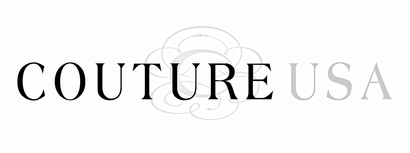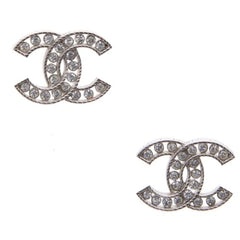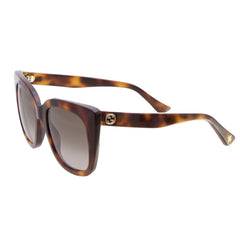Your Bag is Empty
Menu

Leaving Traditions Behind: Is Fashion Week Moving On?
March 03, 2017 4 min read

When you take a look at fashion history, certain moments seemed trapped in amber– they're timelessly groundbreaking. Fashion Week traditions have been around for so many years that it's rare for a designer to break free. These shows, like Gianni Versace's Fall 1992 Miss S&M or Alexander McQueen's It's Only a Game, stepped away from the momentary trends to make a singular statement: break traditions.
Aside from these revered shows, brilliant fashion and craftsmanship typically float through a sea of traditional and expected settings. Fashion Week and all of its showings are breathtaking year after year, but often in the same ways. In some cases, it's to focus on the clothing and some designers, like Marc Jacobs at NYFW17, try to inject a novel perspective on the typical fashion show by showcasing their collection with models walking down the catwalk in the silence of a vast warehouse.
Breaking traditions is happening in increasingly different ways. We've seen the rise of the political slogan shirt this season, sure, but we've also seen a trend in which designers seem to be moving away from the historical New York, London, Milan, and Paris Fashion Weeks. Instead, we've seen designers schedule their own shows outside of Fashion Week (or during Fashion Week, like Yeezy attempted to), live-streaming their collections, create short films, and working newer technology such as Instagram Live into their plan. This year alone, Vera Wang stepped out of Paris Fashion Week to instead debut a film that showcased her collection and a love of Paris. Versace also announced that they won't show in Couture week to focus on client-oriented shows throughout the year. Another tradition that seemed to be set in stone, the pre-season schedule, is dissipating quickly. There is a move away from the months-long wait between the show and the client being able to purchase the clothing. After all, how likely is it that consumers will maintain interest for months to purchase a coat they saw in February once it finally becomes available in August? It turns out that consumer's attention spans are increasingly cursory, timing in at a whopping 8 seconds. Now, this doesn't mean that the coat you loved in the beginning of the year will be completely out of your mind by the time cooler weather rolls around, but it is a long time to wait. That's why some designers are breaking away from the seasonal tradition and employing see-now-buy-now methods. This business model means that almost as soon as you see that beautiful dress breeze by you on the runway, it's available for purchase. There are pros and cons to the old and new ways: having the months-long interim between shows and availability, the brands benefit from the immediate feedback and adjust collections to better fit in with the emerging trends. The see-now-buy-now model puts a lot of hope that buyers will want to purchase those items as they are presented. However, the brands that have adopted see-now-buy-now, like Michael Kors in NYFW17, report huge increases in traffic to their website and new styles selling out quickly after they debut on the runway, making this particular break from Fashion Week tradition a success.There is beauty in simplicity #MarcJacobs #BackToBasics #ThatsAWrap #DoneAndDusted #NYFW #MJFW17
A post shared by Matthew Bires (@matthewbires) on
Leaving behind the traditional waiting period between fashion shows and purchase-availability also lets brands link to their content directly to consumers via social media. Instagram has unleashed a shopping feature to their app, letting brands post images from runway shows with direct links to each piece that's up for grabs. And then there's also the tradition of inclusivity that is associated with Fashion Week. Though this is changing as the years go by, many Fashion Weeks had an aura of "you're either here or you're not." Literally, it makes sense because the entire fashion world can't be at the same event, but from a marketing perspective it's always better to create a community that seems open and inclusive to all consumers– unless you're Birkin and the name of your entire game is being inclusive to those who are "deserving." Instead, opening up the alluring world of fashion means that designers are live-streaming and posting up-close "detail" pictures. The goal? Earn more customer loyalty and involvement. Break the tradition of stowing away fashion week for the elite, celebrities, photographers, and fashion insiders. Checking out the comments on a fashion show livestream is like joining in on a conversation with your friends, full of critiques and praise as well as side-conversations to build community. And that's the entire goal: bring in the "outsiders" who were traditionally left behind for one reason or another. This 2017 Fashion Month has also shown us the industry's interest in breaking a few more traditions: diversity. It seems like designers are slowly moving away from the custom of using young, thinner, and lighter skinned models. One brand that we looked at hasn't had a single person of color in their shows since 2014– and that was the one year they diversified. On the other hand, 2017's featured designers seemed focused on bringing in models that strayed from the Eurocentric traditions in fashion either with their age, body shape, or skin color. Ashley Green, Halima Aden, Alek Wek, and many more made their aappearances on the runway in the past few weeks, showing that designers are willing to make some much-needed changes to the faces of fashion.
A move out of the usual arenas is also underway, breaking yet another long-standing tradition. Many designers have pulled from New York Fashion Week to instead show in the budding Los Angeles Fashion Week and Karl Lagerfeld held the Chanel Resort 2017show in Cuba and even employed Tony Castro as a model. Political statements aside, this move by Chanel moved the fashion world into unchartered territory by taking it to a country that had been sealed off from the US for decades. Regardless of what specific fashion convention a designer is targeting and tweaking, it's important to recognize that change is (finally) happening! There's a lot of talk about Fashion Week being dead or dying, but we like to think of it as a metamorphosis that creates a space for more creativity, more diversity, more inclusivity, more purchases, and more involvement. The future can only be brighter with the new air being breathed into the fashion world.
Recent Articles
- All you need to know about Chanel Flap bags November 03, 2023
- Should we say Saint Laurent or Yves Saint Laurent? May 22, 2023
- Top Summer Travel Essentials July 14, 2022
- Gift Ideas Your Mom will Love April 29, 2022
- Walk a Mile in the Latest Shoe Trends April 20, 2022
Couture VIP
Sign up now for exclusive pre-sale alert before anyone else!
+30 OFF your first purchase of $300 or more
Cookie Policy
By continuing on this website, you consent to the use of cookies by CoutureUSA and our partners. Our goal is to offer you a more enjoyable shopping experience with personalized content and advertising. For more information, please read our Privacy Policy.
OK More Info

Welcome Back!
YOU HAVE THE FOLLOWING ITEMS WAITING IN YOUR CART!
BUY NOW BEFORE IT'S TOO LATE!
VIEW CART























































































































